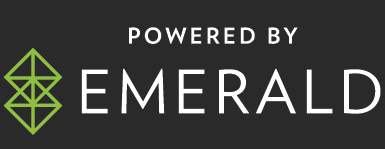In an era when advertisers are increasingly wary of appearing alongside hard news, the conversation around brand safety has never been more critical — or more misunderstood. Automated filters and outdated risk models have drawn thick red lines around the very stories that define our times, severing the connection between trusted journalism and responsible advertising. In this interview, Ivan Doruda, CEO of MGID, explains why the industry’s protective systems have backfired, how this has weakened the media ecosystem, and what advertisers can do to reverse the trend. From rethinking blocklists to embracing smarter contextual tools and native formats, Doruda makes the case for a more nuanced, collaborative approach — one that safeguards brands and sustains the truth.
By R. Larsson, Advertising Week
Many advertisers are steering clear of hard news environments, worried about brand safety risks. Why has this become such a persistent issue in the industry?
Brand safety tools were built to protect advertisers, but the systems now work against their original purpose. Most automated filters react to specific words, such as “climate” or “conflict,” without understanding their meaning in context. That has turned nuanced reporting into something that looks risky on paper, even when it isn’t.
Publishers that cover important stories often see their content blocked from monetisation, and advertisers lose access to highly engaged readers. It’s a one-size-fits-all approach that’s eroding the relationship between quality journalism and responsible advertising.
There’s little evidence that advertising near serious news harms brand perception. Why are advertisers still so cautious?
It often comes down to habit. Many marketers still carry assumptions from a time when adjacency alone was seen as risky. While the concern may seem rational, the real story is totally different. In practice, audiences tend to respond well when they see brands placed alongside trusted journalism.
Yet many advertisers remain cautious, held back by outdated metrics and rigid risk-management systems that discourage experimentation. The technology they use to stay safe hasn’t evolved as fast as audience behaviour.
How has this affected publishers, particularly those producing hard news?
The financial hit is significant for publishers. Topics that define good-natured public discourse, whether politics or global crises, are suddenly labeled unfit for advertising. That means even though traffic can spike during major news cycles, the revenue somehow drops.
This imbalance leaves fewer resources for real investigative reporting or quality local coverage. Over time, this dynamic forces media outlets to prioritise lighter, more clickable content just to survive. The result is a weaker, less informed media ecosystem that struggles to fund genuine reporting.
What role can advertisers play in reversing this trend and supporting independent journalism?
Advertisers have more power than they realise. They should reassess their blocklists, clarifying and updating what “safe” means to them. This will often open the doors to responsible news environments that audiences already trust. Readers on credible news sites spend more time there, pay more attention, and remember the brands they see. When advertisers value context and quality over fear of association, they gain stronger engagement and help sustain the information ecosystem at the same time.
Automation clearly plays a role in brand safety enforcement. How should the industry rethink its use of technology here?
Technology shouldn’t be blamed for the problem, but it does need to mature. Most systems still rely on static keyword lists that treat every mention of a difficult subject as dangerous. The next generation of tools should understand tone, sentiment, and intent.
Artificial intelligence can already identify the difference between a news report and harmful content. Smarter contextual analysis would help advertisers keep control of where they appear without blocking valuable opportunities. The focus should be on using automation as an enabler, not as a filter that silences quality journalism.
Native advertising has often been cited as a way to connect brands and audiences in trusted environments. How does it fit into this conversation?
Native advertising works because it fits naturally within its surroundings. When advertising appears alongside credible editorial content, it feels relevant and considerate to the reader. And in news environments, where people are already seeking insight and meaning, this approach holds a lot of potential.
So, rather than steering clear of hard news, brands can use native formats to express their values and stories with thought and care. Publishers, in turn, gain a sustainable way to support their journalism, while advertisers earn attention in a setting built on trust.
Looking ahead, how can the industry strike the right balance between brand protection and supporting a healthy media ecosystem?
The industry needs to update its definition of safety. Protecting a brand doesn’t mean avoiding the world’s realities. It means appearing next to information that is accurate, balanced, and relevant. Publishers already know how to flag unsuitable material, and advertisers have the tools to measure real outcomes.
The missing ingredient is collaboration. If both sides work together, and the technology continues to become more context-aware, we can create a healthier open web where truth-telling and advertising coexist.




